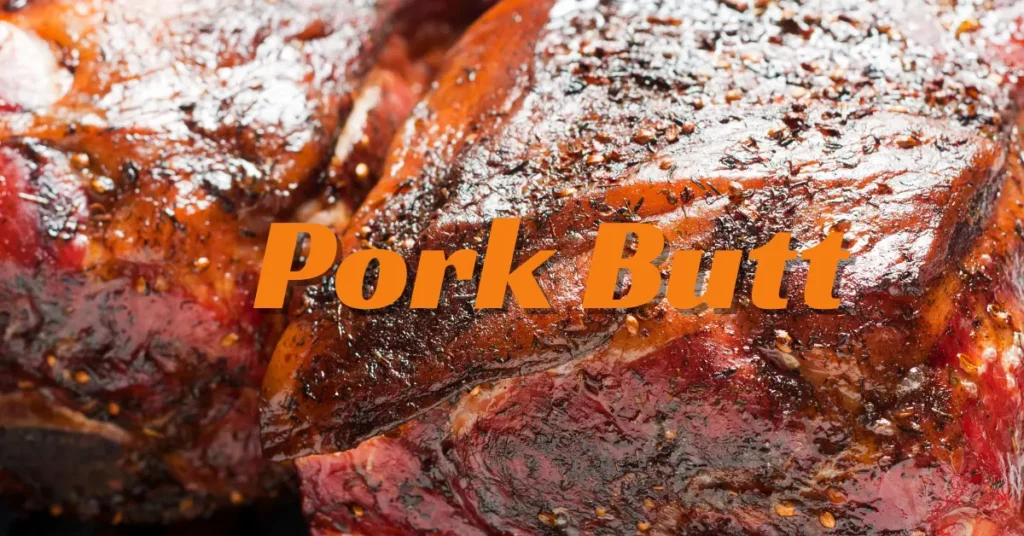This post may contain affiliate links. If you use these links to buy something we may earn a small commission. Thanks.
Pork butt, also known as Boston butt, is one of the most flavorful cuts of pork, commonly used for pulled pork, slow roasting, or smoking. This cut is marbled with fat, making it ideal for long, slow cooking methods that allow it to become juicy and tender. However, the secret to a mouthwatering pork butt lies in the seasoning. The right blend of spices and application techniques can transform an ordinary pork butt into a flavorful masterpiece. This guide will take you through every step of seasoning pork butt to ensure you get the best results.
Choosing the Right Cut of Pork Butt
Before seasoning, selecting the right cut of pork butt is crucial.
- Bone-in vs. Boneless: A bone-in pork butt provides more flavor and retains moisture better, while a boneless cut is easier to handle and may cook more evenly.
- Fat Marbling: Look for a cut with good marbling. The fat will render down during cooking, keeping the meat moist and enhancing flavor.
- Size: Most pork butts range from 6 to 10 pounds. Choose a size that fits your cooking needs and equipment.
Preparing the Pork Butt for Seasoning
Proper preparation helps the seasoning adhere and enhances the final flavor.
- Trim Excess Fat (Optional): While some fat is beneficial, excessive fat can prevent the seasoning from fully penetrating the meat. Trim any thick layers, but leave a thin layer for moisture and flavor.
- Pat the Meat Dry: Use paper towels to remove excess moisture. This step ensures the seasoning sticks well to the meat.
- Score the Fat Cap (If Present): If the fat cap is thick, scoring it in a crisscross pattern allows seasonings to penetrate deeper and improves rendering during cooking.

Choosing a Seasoning Blend
A well-balanced seasoning blend enhances the natural flavors of pork. Here are a few popular options:
Basic Seasoning Blend
A simple yet effective combination:
- 2 tbsp salt
- 1 tbsp black pepper
- 1 tbsp garlic powder
- 1 tbsp onion powder
- 1 tsp paprika
Sweet & Smoky Blend
Ideal for pulled pork or barbecue:
- 3 tbsp brown sugar
- 2 tbsp smoked paprika
- 1 tbsp salt
- 1 tbsp black pepper
- 1 tsp cayenne pepper (optional for heat)
Savory & Herby Blend
For a more aromatic taste:
- 2 tbsp kosher salt
- 1 tbsp dried rosemary
- 1 tbsp thyme
- 1 tbsp mustard powder
- 1 tsp black pepper
Spicy Blend
For those who enjoy heat:
- 2 tbsp chili powder
- 1 tbsp cumin
- 1 tbsp salt
- 1 tbsp black pepper
- 1 tsp red pepper flakes
Applying the Seasoning
Once the seasoning blend is ready, apply it properly to maximize flavor infusion.
Dry Rub Method
The dry rub is the most common way to season pork butt.
- Apply a Binder (Optional): Lightly coat the pork with yellow mustard or olive oil to help the seasoning adhere better.
- Coat Evenly: Sprinkle the seasoning generously on all sides, pressing it into the meat with your hands.
- Massage the Meat: Rubbing the spices into the meat ensures the flavors penetrate deeper.
- Let It Rest: Allow the pork butt to sit at room temperature for 30 minutes or refrigerate overnight for deeper flavor infusion.
Wet Marinade or Injection Method
For deeper seasoning penetration, try a marinade or injection method.
- Marinade: Combine seasoning with apple cider vinegar, Worcestershire sauce, or soy sauce and let the meat soak overnight.
- Injection: Use a meat injector to infuse a liquid seasoning mix deep into the pork butt. Common injections include broth mixed with spices, butter, or apple juice for moisture and flavor.
Resting Time for Flavor Penetration
Resting time is crucial for maximum flavor.
- 30 Minutes at Room Temperature: If cooking immediately, allow the seasoned pork butt to rest for at least 30 minutes to let the seasoning settle.
- Overnight in the Refrigerator: For the best flavor, wrap the pork in plastic wrap and refrigerate it for at least 8 hours. This allows the spices to fully penetrate the meat.
Cooking Considerations After Seasoning
Once seasoned, consider the best cooking method for your pork butt.
- Smoking: Slow smoking at 225°F–250°F allows the seasoning to form a flavorful bark. Use wood like hickory, apple, or cherry for added flavor.
- Roasting: Roasting at 300°F–325°F in an oven ensures a crispy outer crust while keeping the inside tender.
- Slow Cooking: A crockpot or slow cooker with low and slow heat results in tender, fall-apart pork.
- When to Add More Seasoning: You can add additional seasoning or a mop sauce during cooking to maintain moisture and enhance flavor.
Final Tips for Best Results
- Balance the Salt: Be mindful of salt levels if using brines or injections.
- Use a Meat Thermometer: Cook until the internal temperature reaches 195°F–205°F for perfectly tender meat.
- Let It Rest After Cooking: Allow the pork butt to rest for 20–30 minutes before slicing or pulling to retain juices.
- Pair with the Right Sauce: Barbecue sauce, vinegar-based sauces, or mustard-based sauces complement different seasoning profiles.
Conclusion
Seasoning a pork butt properly is the key to unlocking its full potential. By selecting the right cut, applying the ideal seasoning blend, and allowing ample resting time, you can achieve a deeply flavorful and juicy pork butt. Whether you prefer a simple dry rub, a spicy kick, or a sweet and smoky barbecue blend, experimenting with different seasonings will help you perfect your pork butt for any occasion. Happy cooking.
